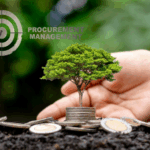Over the past few years, sustainability leaders have faced growing scrutiny over how they communicate their environmental, social, and governance (ESG) performance. While some companies are still accused of greenwashing, others are quietly adopting the opposite approach—a greenhushing strategy. This trend, where businesses underreport or remain silent about their climate actions, may seem like a way to avoid public backlash—but it often does more harm than good.
Greenhushing is the decision to underreport or entirely withhold communication about sustainability actions. While it may appear as a cautious move to avoid criticism or regulatory exposure, I believe it’s a missed opportunity that can undermine stakeholder trust, corporate credibility, and long-term progress.
What Is Greenhushing, and Why Are Companies Doing It?
Unlike greenwashing—where companies exaggerate or falsify sustainability claims—greenhushing refers to real sustainability actions that go unreported. A growing number of organizations are deliberately staying quiet about their climate targets, carbon reductions, or ESG achievements for fear of being accused of overpromising or not doing enough.
In a recent study by South Pole, 1 in 4 companies with science-based climate targets chose not to publicly disclose them. Why? Fear of public scrutiny, reputational risk, and an evolving legal landscape.
With regulatory frameworks like the EU’s Green Claims Directive, CSRD, and SEC climate disclosure rules, the pressure to be accurate is real. But withholding information entirely can send the wrong message: that you have something to hide.
The Hidden Dangers of Greenhushing
1. Loss of Trust and Transparency
Stakeholders—from investors and regulators to customers—expect transparency. Silence breeds doubt. Even if a company is making real progress, refusing to talk about it undermines perceived credibility and erodes the trust built over time.
2. Missed Brand Differentiation
In a world where ESG performance increasingly influences purchasing and investment decisions, staying quiet removes a powerful source of brand differentiation. Communicating progress—even if imperfect—can show leadership, resilience, and responsibility.
3. Failure to Inspire Action
Many organizations play a leading role in shaping sustainable practices within their industries. If they choose silence, others may follow. This can create an industry-wide gap in ambition and accountability.
Why Staying Silent Is No Longer Safe
While the fear of criticism is valid, especially when public standards are still evolving, remaining silent is not a sustainable communication strategy. There are now globally accepted frameworks for ESG disclosures and third-party verification mechanisms that allow companies to speak confidently and transparently.
In fact, many companies are now seeking independent assurance of their ESG data—especially their Scope 3 emissions, biodiversity impacts, and diversity metrics—to avoid accusations of misleading stakeholders. Speaking with honesty, sharing both achievements and areas needing improvement, is far more credible than total silence.
How to Navigate ESG Communication Without Greenwashing
If you’re unsure how to strike the right balance between transparency and caution, here are a few steps I recommend:
-
Use third-party frameworks like the GHG Protocol, SBTi, or TCFD to guide disclosures.
-
Be honest about progress—report both successes and challenges.
-
Avoid overly vague language. Use specific metrics and time-bound goals.
-
Engage stakeholders through reports, websites, and social media—but make it consistent and aligned.
-
Consult legal, communication, and sustainability experts to ensure claims are compliant and defensible.
The Broader ESG Context
Greenhushing is part of a larger communication spectrum that includes greenwashing (overclaiming), greenwishing (overpromising with good intentions), and greenblushing (modestly underplaying efforts). All pose risks, but silence may be the most misunderstood.
Organizations that find a credible, transparent voice in this evolving space will be better positioned to lead—not just react. In the long run, authentic communication fosters resilience, loyalty, and innovation.
Final Thoughts
Silence might feel safe in the short term, but in ESG, it’s often a high-risk move. As sustainability becomes core to business resilience, stakeholder expectations are rising. Companies must not only act—they must also communicate, with clarity, responsibility, and courage.
As someone who has worked with hundreds of organizations on their ESG journey, I believe now is the time to speak up—wisely and transparently.









